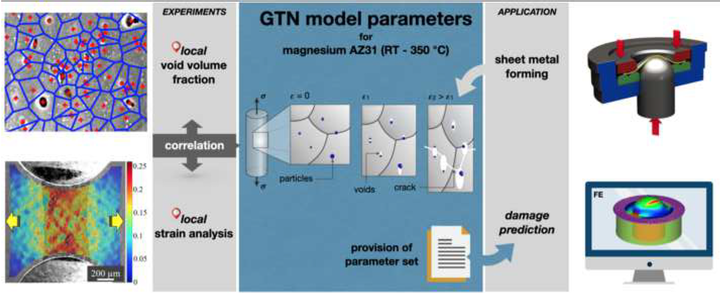GTN Model-Based Material Parameters of AZ31 Magnesium Sheet at Various Temperatures by Means of SEM In-Situ Testing

Abstract
Magnesium alloys are primarily associated with complex forming mechanisms, which yield ductility at high temperatures. In sheet metal forming, high triaxiality stress states that favor the ductile damage mechanisms of void formation and growth are known to malleable metals. The formulation of coupled damage models has so far failed, due to the incomplete experimental determination of damage parameters for magnesium AZ31 thin sheet. A quantitative investigation was conducted to determine the ductile damage behavior of twin-roll cast, hot rolled, and annealed AZ31 thin sheet. Results on the mechanisms of void nucleation-, coalescence-and growth-rate were established at temperatures ranging from room temperature to 350 C. In-situ tensile tests were carried out in a scanning electron microscope with three different specimen types: Simple tension specimens, notched specimens for high triaxiality stress state testing, and shear specimens. Through a comparative analysis of local strains measured by digital image correlation and local void volume fractions determined through post-mortem analysis of specimen cross-sections, GTN (Gurson–Tvergaard–Needleman) model-based material parameters were determined by experiment, representing a novel departure in the magnesium research landscape. The procedure developed in this context should also be transferable to other metals in the form of thin sheets.